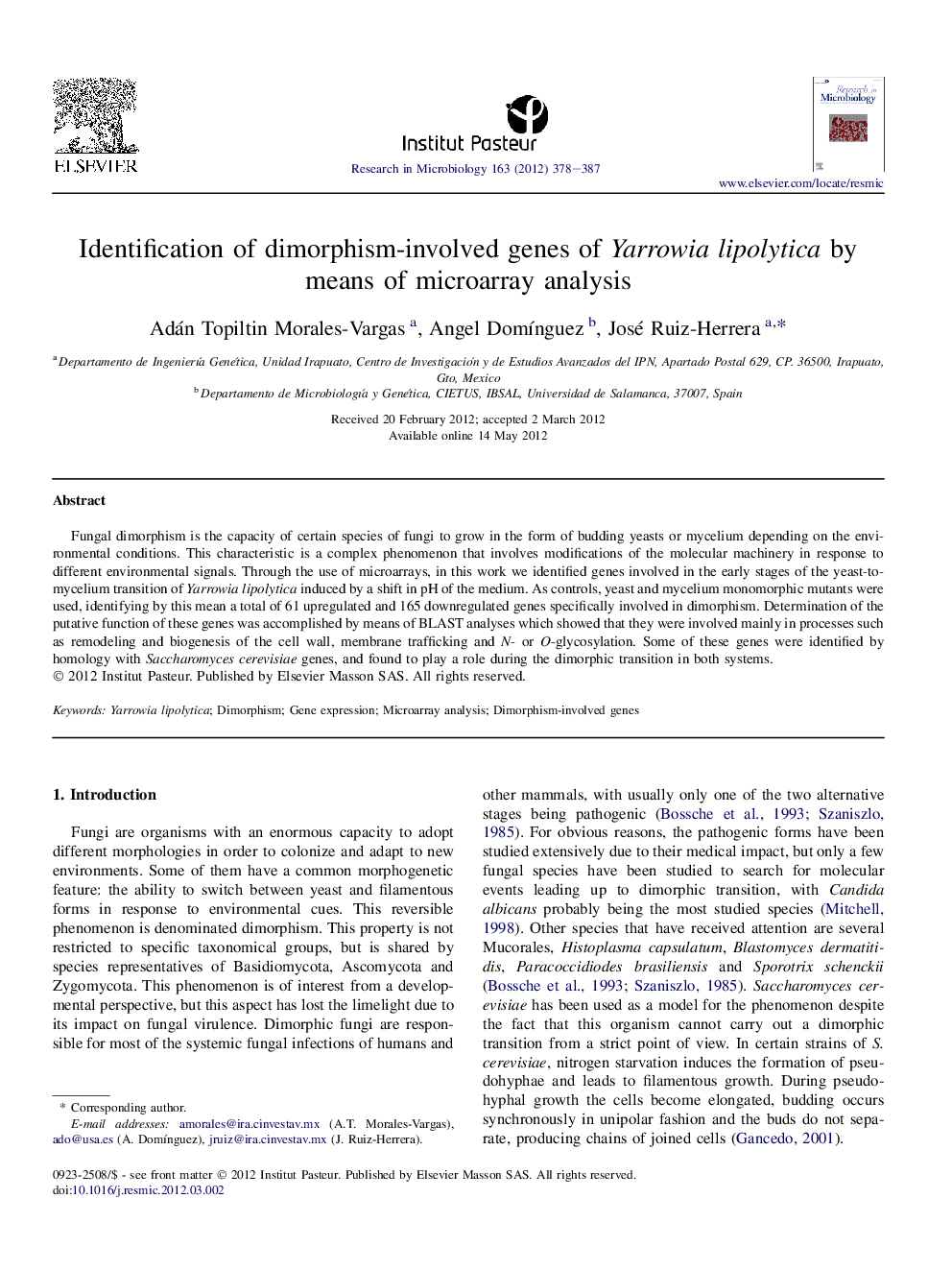| Article ID | Journal | Published Year | Pages | File Type |
|---|---|---|---|---|
| 4358716 | Research in Microbiology | 2012 | 10 Pages |
Abstract
Fungal dimorphism is the capacity of certain species of fungi to grow in the form of budding yeasts or mycelium depending on the environmental conditions. This characteristic is a complex phenomenon that involves modifications of the molecular machinery in response to different environmental signals. Through the use of microarrays, in this work we identified genes involved in the early stages of the yeast-to-mycelium transition of Yarrowia lipolytica induced by a shift in pH of the medium. As controls, yeast and mycelium monomorphic mutants were used, identifying by this mean a total of 61 upregulated and 165 downregulated genes specifically involved in dimorphism. Determination of the putative function of these genes was accomplished by means of BLAST analyses which showed that they were involved mainly in processes such as remodeling and biogenesis of the cell wall, membrane trafficking and N- or O-glycosylation. Some of these genes were identified by homology with Saccharomyces cerevisiae genes, and found to play a role during the dimorphic transition in both systems.
Related Topics
Life Sciences
Immunology and Microbiology
Applied Microbiology and Biotechnology
Authors
Adán Topiltin Morales-Vargas, Angel DomÃnguez, José Ruiz-Herrera,
